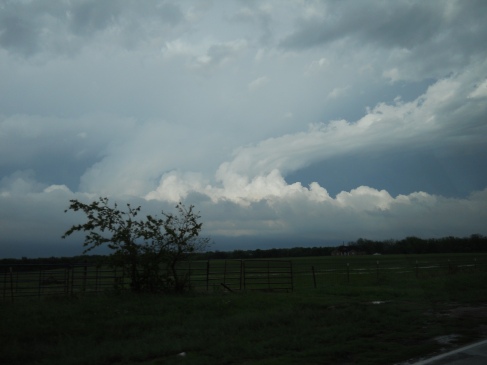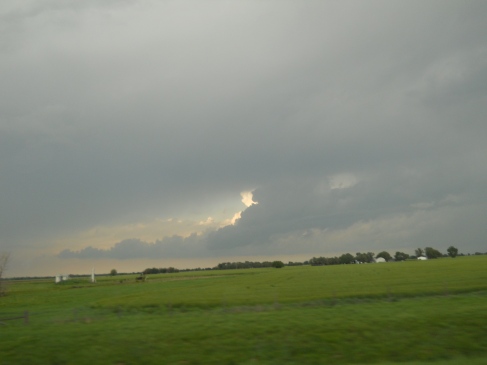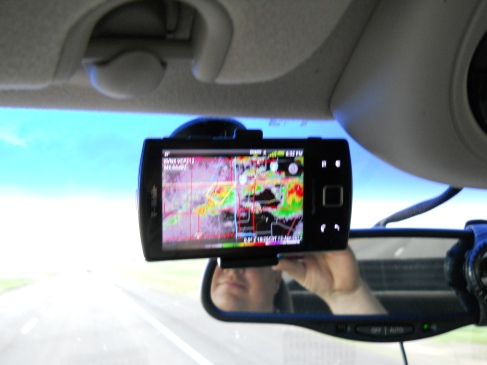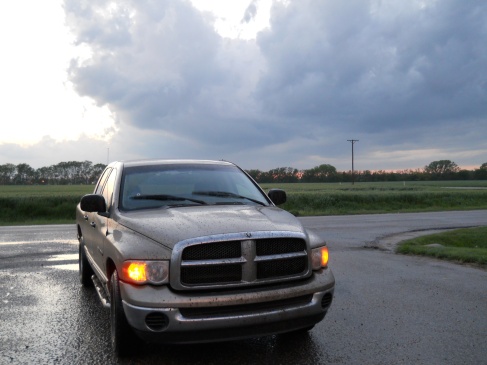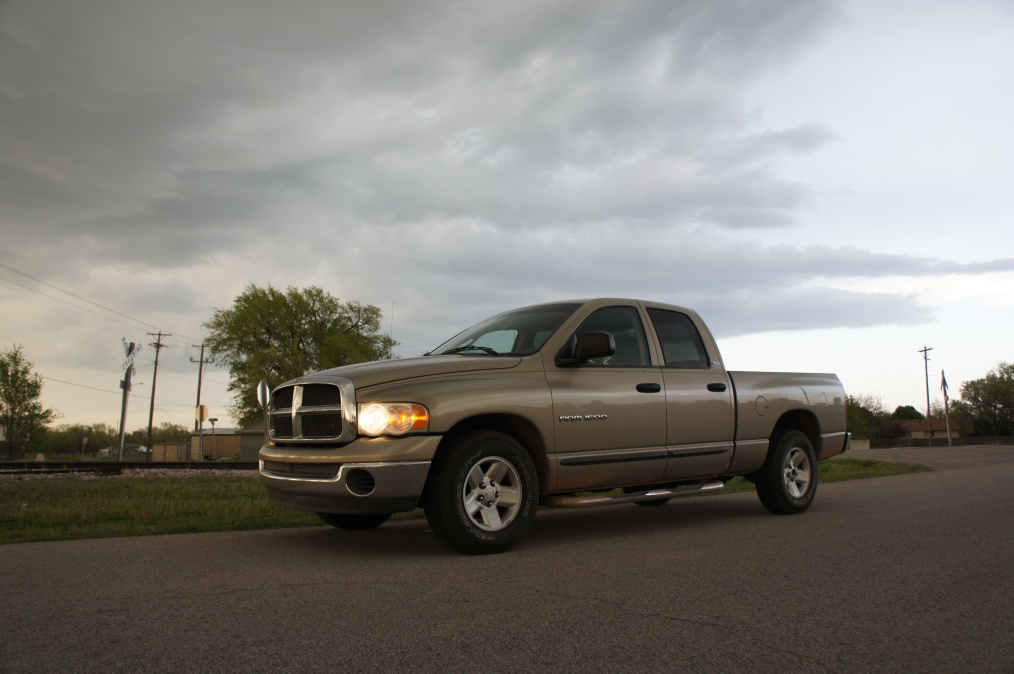The chase is only as good as the vehicle you use. Before that gets taken out of context, I would like to state that everyone’s perfect chase vehicle WILL be different, based on various factors, the most important of them being how well it fits in with your life, unless, of course, you are filthy rich, and can have a dedicated storm chase vehicle.
I’m NOT filthy rich, so hopefully this appeals to folks who have mechanical aptitude, and don’t mind getting a little dirty.
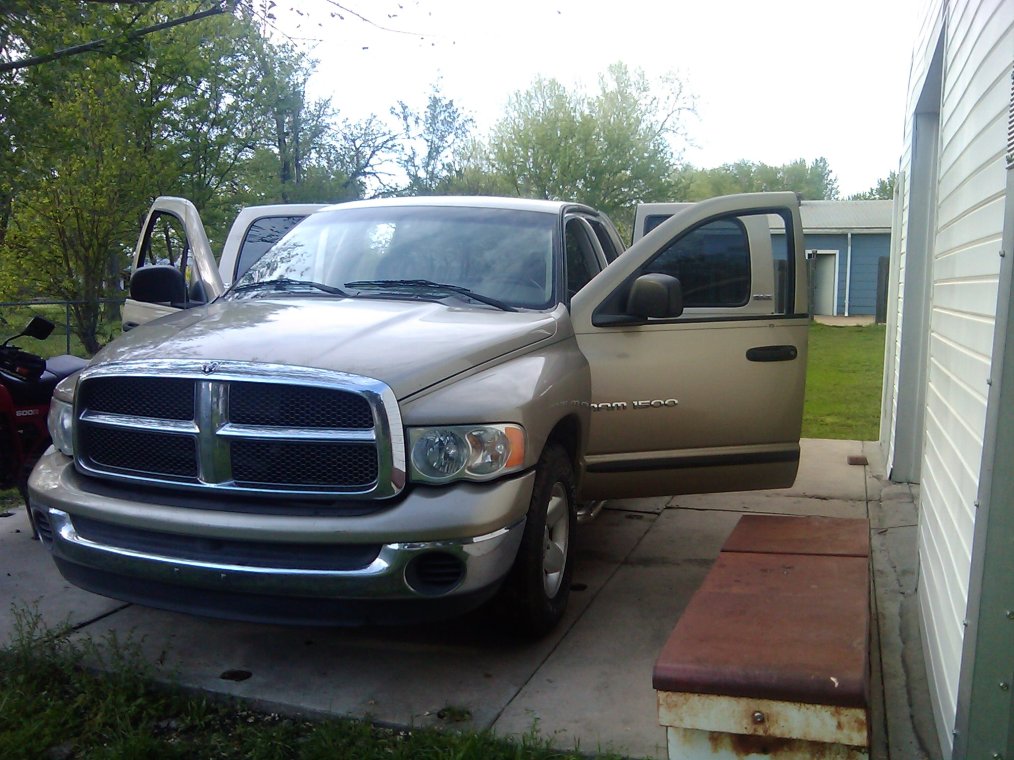
I’m using a Dodge Ram Quad Cab. I like the room, the comfort, the ground clearance, and the sheer reliability of a pickup truck. For me, that will offset the slight fuel mileage penalty. Plus it’s good and heavy. Cars that get tossed in regular crosswinds might be somewhat unsettling in higher winds.
Your vehicle must be mechanically sound. I just purchased this truck in November, and I know two things about it. It’s a 2002, and it’s seen a lot of miles already. Things I went through that is good for any chase vehicle to have checked:
-Cooling system. My truck needed a new one, and it got it. I’m not saying you need one too, but check out your “consumables”. Belts, and hoses. If you see cracks in the belts, or if your hoses feel really mushy, or are bulging, replace them.
-Wheel Bearings. Mine were shot. Some cars use replaceable bearings, some use bearing packs. If your car is fairly young, this is less of a concern.
-Tires. Mine, once again, were toasted. Spring for quality tires. I bought good ones knowing that I may go down a rough, rocky, or muddy road, and I wanted a tire that would live. If you are down to the wear bars, get new ones. With a bad storm bearing down on you, a blown tire quickly turns into much more than an inconvenience. Speaking of spare tires, if you don’t know how to work with your vehicle’s jack, or whatever, please practice. (It goes without saying to make sure there’s air in it, right?) I don’t mind admitting, I have never had a Dodge truck before, and apparently since Daimler had a hand in designing this, it would explain why it took me 40 minutes to figure out how to remove the spare tire with the contrived system of square tubes and jack handles, in order to makes something fit the tire winch.
-Fluids. Engine oil, and transmission oil, and the filters for both should be changed. If you have a newer vehicle made in the last ten years, it’s very likely that your transmission fluid is special synthetic stuff, costing more, but does extend the life of your transmission. It costs money, but you’re going toe-to-toe with the forces of nature.
-Wipers. Must be good! You don’t have to buy the high dollar PIAA Graphites, but you do need a set that works well. If you have constant streaking problems, your windshield may be to blame. Pollutants and so forth can create a film on the windshield that is hard to cope with, and makes wipers streak. Try washing your windshield with Bon-Ami or Comet. There is also Rain-X, and Aquapel, the latter which I understand is very very good.
As for preparing a vehicle, there are a few things I consider to be musts. First and foremost is a laptop with GRLevel3 loaded. GRLevel3 is a very nice level 3 radar viewer that gets a good chunk of it’s data from free public servers. It will interface with third party data providers for even more usability. Another must is a GPS transponder. GRLevel3 will show your position on the radar viewer, and that is very nice when judging where you are relative to the storm.
It’s not real safe to drive with a laptop floating loose in the car, so the hot ticket is to have a laptop mount, much like what you see in police cars. Of course, they make them just for my Dodge Ram, but wow are they expensive! Last I checked it was between $250 and $400, depending on brand, retailer, etc. I decided to make my own, and today, we began measuring out for what we have in mind.
I started with the main part, the upper half of a laptop mount I salvaged from a Ford police car:
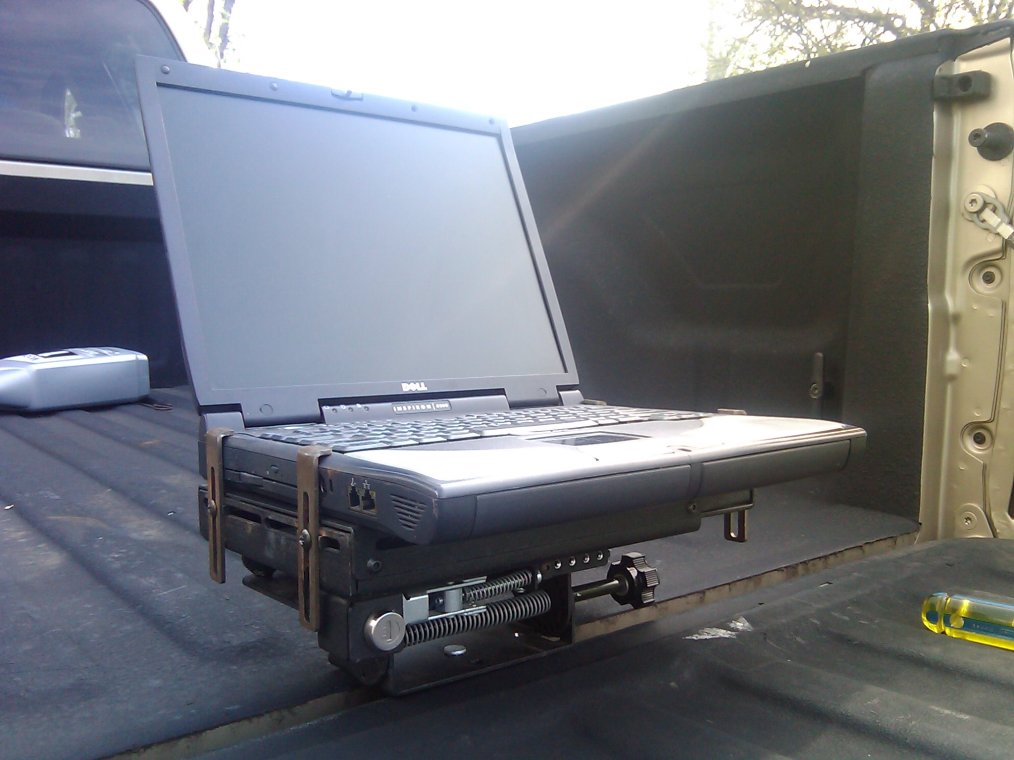
Then came the harder part….where and how to affix this. The Dodge has a three-piece front seat consisting of the two seats on the outside, and the center seat/console thing that they tout for the working man. The purchased mounts typically attach to the front seat bolts, and after seeing one for my truck, it seemed like it would place the computer too far towards the passenger for my liking. It also seemed like it may interfere with the passenger side air bag, so we decided to make one that sits closer to the center.
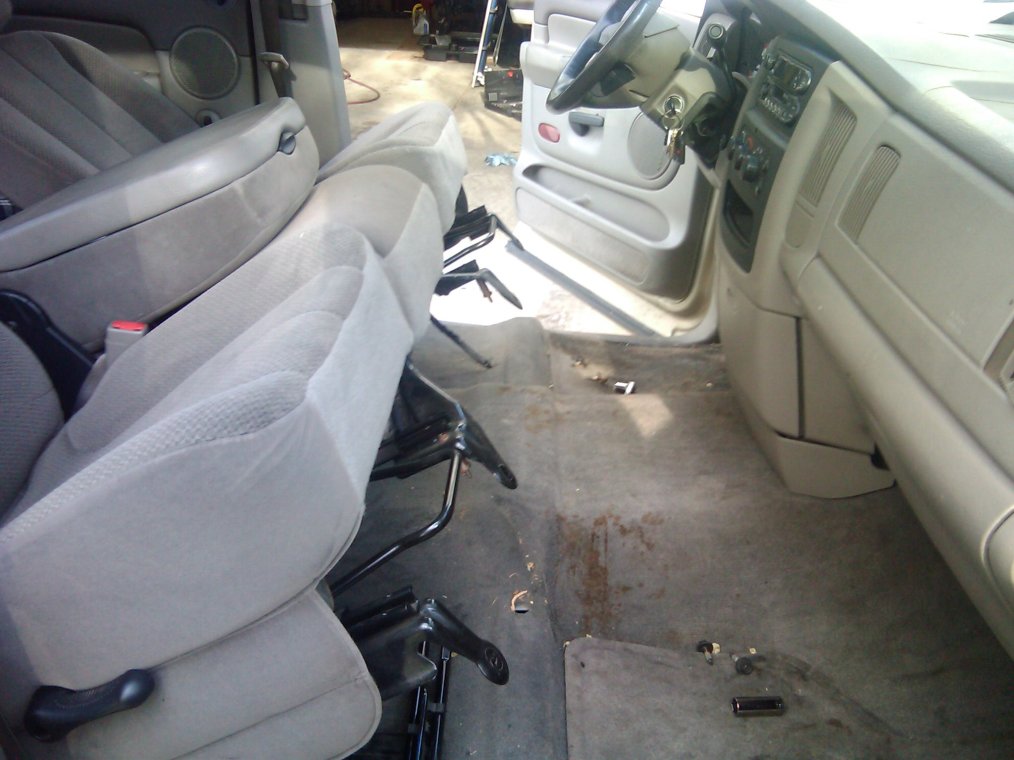
The seat was simply unbolted, and rocked back, giving access to the bolts that secure the center seat/console to the seat framework, and giving us the ability to measure out the foundation of our laptop mount. We were also concerned about the stability of the entire setup, so we found two extra mounting points hidden under a loose fitting piece of skirting under the instrument panel, just below the cupholder:
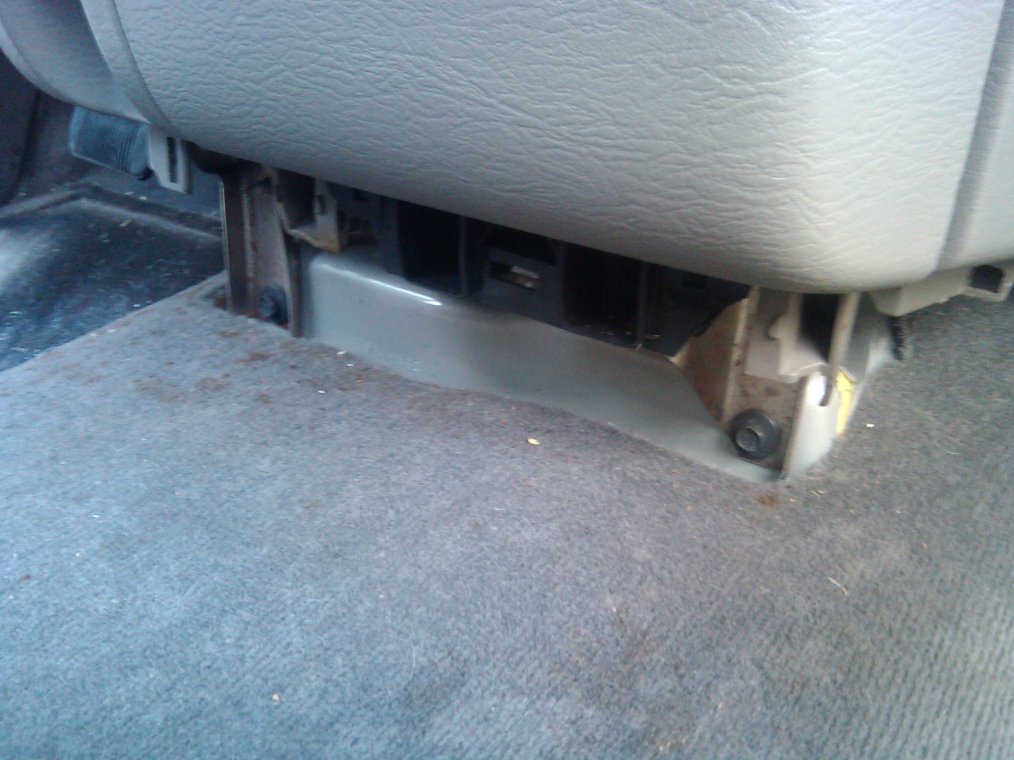
Between this, and fluid changes, that’s as far as we got today. We’ll start designing this soon, and possibly have something in the truck in a couple of weeks!















